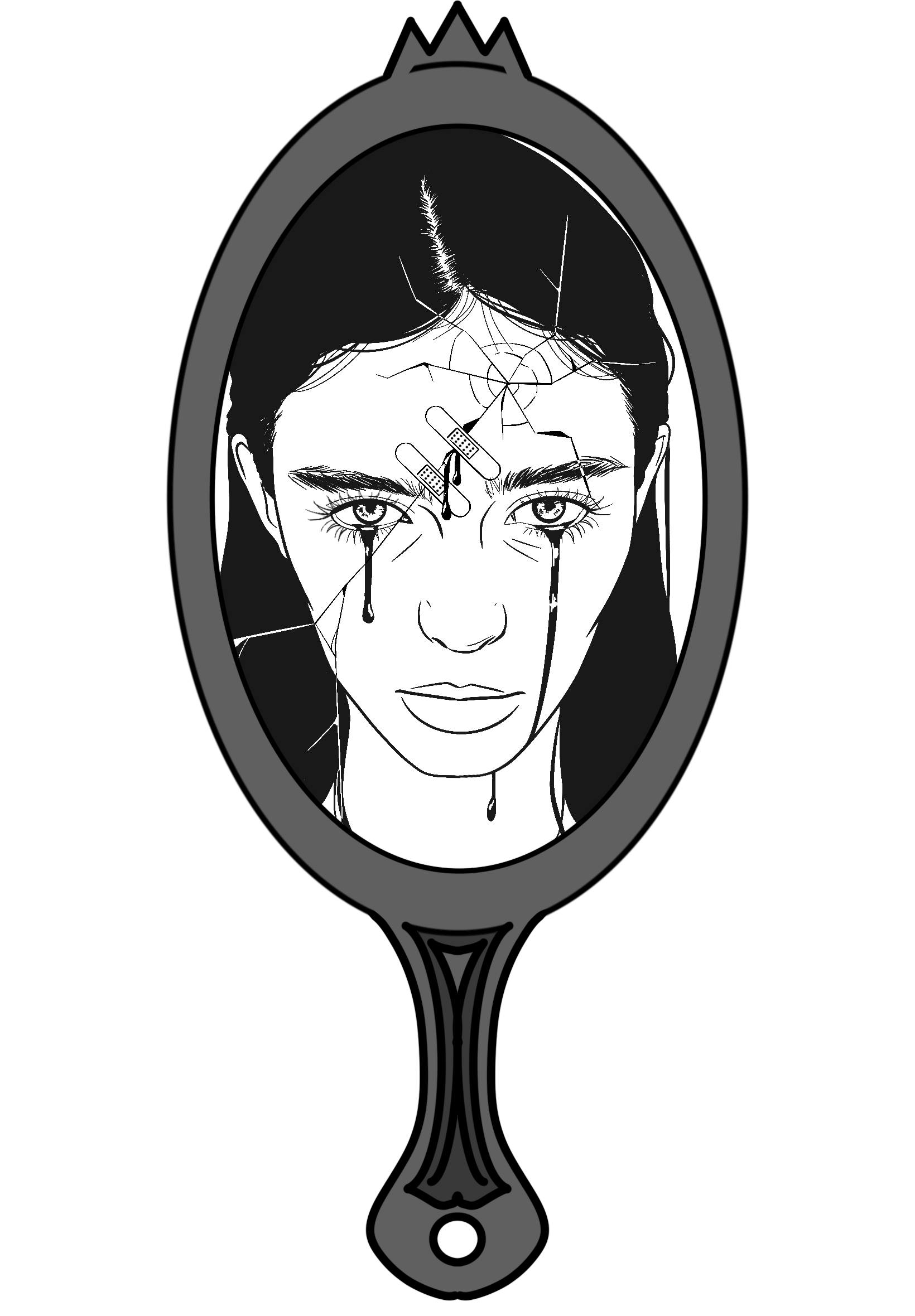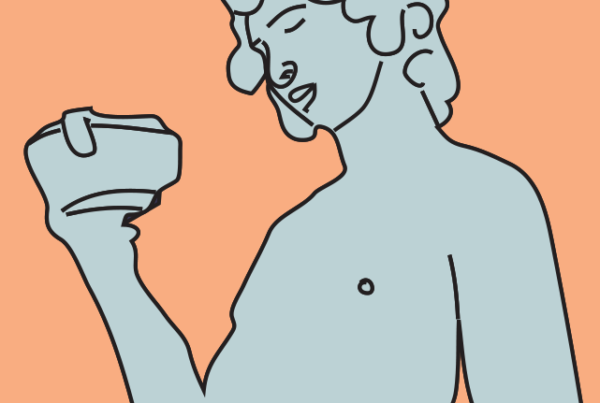

The phrase ‘fragile ego’ is one you hear often on social media or in pop psychology, often linked to narcissists. Although, the clinical disorder itself is not well studied despite its prevalence. The term ‘fragile ego’ paints the image of easily shattering someone’s high self esteem, hinting that they truly are not comfortable with themselves, and seemingly insignificant actions can make them feel rejected by others. Why do we call it a fragile ego? Does this represent reality or do we misunderstand narcissism? The presentation of narcissistic tendencies overall focuses on the self, with grandiose beliefs such as superiority to others in intelligence, uniqueness and competence. This might not seem particularly reflective of fragility. It is important to note that there is a personality disorder and subclinical presentation, and within the disorder there is a large variability from person to person in the presentation of symptoms and severity. However, a common feature is the requirement of constant attention and praise from the people surrounding them, using them to make themselves look dominant and better, leading many to conceptualize narcissists as having a high self esteem.
It is possible that narcissism and self esteem are not correlated at all, that they are categorically different (Brummellmann et. al. 2016), which has been supported by other studies (Vater et.al., 2013a). Even though both concepts center on a positive view of the self, the distinction lies in several factors, self esteem meaning being satisfied with yourself. Therefore, someone with narcissistic tendencies according to this definition could not have high self esteem. This is derived from the Rosenberg Self-Esteem Scale (1965), where questions involve answering statements such as “I feel I am a person of worth or at least on an equal plane as others” or “I am able to do things as well as most other people”. In other words, this is measuring whether you think of yourself as equal to others, rather than the narcissistic thought process of being superior. Another contrast is the developmental route of both: narcissism peaks in adolescence and decreases in adulthood, while self esteem has its lowest point in adolescence and increases as one gains more perspective, skills and knowledge.
“Fragile ego” was not always connected with narcissism, but several theories have opted to consider the context and developmental route that leads to the emergence of these traits. Kohut first proposed this mechanism of fragile self esteem in the 1970s. There is evidence that people with narcissistic personality disorder experience shame more often than others (Ritter, et. al., 2014). Shame is an emotion involving a negative evaluation of the stable, global self, based on perceived failures (Lewis, 1971; Tangney and Dearing, 2002). On the contrary to Kohut’s theory, Brummmelman et. al. (2015) found that it is in fact a parent’s overvaluation of their children’s achievements – praising them without a basis too often and constantly can result in the child becoming self-absorbed and seeking more of this affirmation. Furthermore, childhood abuse – an extreme case of negative feedback – and insecure attachment has influence in this aspect (Wang et al. 2023). Overall, these results suggest that mostly external factors influence the manifestation of narcissistic traits, and that the behaviour seen by others is a front.
In conclusion, as many terms in pop psychology, this one also simplifies the differences that exist between individuals and the nuances of concepts. Perhaps associating self esteem and narcissism is an outdated concept as suggested by the contrast of older and more recent research.
Photo by Nina Kollof
References
– Andrews, B., Qian, M., Valentine, J.D., 2002. Predicting depressive symptoms with a new measure of shame: the experience of shame scale. British Journal of Clinical Psychology 41, 29–42.
– Brummelman, E., Thomaes, S., Nelemans, S. A., Orobio de Castro, B., & Bushman, B. J. (2015). My child is God’s gift to humanity: Development and validation of the Parental Overvaluation Scale (POS). Journal of Personality and Social Psychology, 108, 665–679. doi:10.1037/pspp0000012.
– Brummelman, E., Thomaes, S., & Sedikides, C. (2016). Separating Narcissism From Self-Esteem. Current Directions in Psychological Science, 25(1), 8-13. https://doi.org/10.1177/0963721415619737
– Kämmerer, A., 2010. Zur Intensität des Erlebens von Schamgefühlen bei psychischen Störungen [The intensity of shame in mental disorders]. Psychotherapy and Psychosomatic 60, 262–270.
– Kohut, H. (1971). The analysis of the self: A systematic approach to the psychoanalytic treatment of narcissistic personality disorders. University of Chicago Press.
– Lewis, H.B., 1971. Shame and Guilt in Neurosis. International Universities Press, New York
– Ritter, K., Vater, A., Rüsch, N., Michela Schröder-Abé, Schütz, A., Fydrich, T., Lammers, C.-H., & Roepke, S. (2014). Shame in patients with narcissistic personality disorder. Psychiatry Research, 215(2), 429–437. https://doi.org/10.1016/j.psychres.2013.11.019
– Rosenberg, M. (1965). Rosenberg Self-Esteem Scale (RSES) [Database record]. APA PsycTests. https://doi.org/10.1037/t01038-000
– Tangney, J.P., Dearing, R., 2002. Shame and Guilt. Guilford Publications, New York
– Vater, A., Ritter, K., Schröder-Abé, M., Schütz, A., Lammers, C.-H., Bosson, J.K., Roepke, S., 2013a. When grandiosity and vulnerability collide: implicit and explicit self-esteem in patients with narcissistic personalitiy disorder. Journal of Behavioral Therapy and Experimental Psychiatry 44, 37–47.
– Wang, X., Yu, L., & Li, J. (2023). Relationships between childhood maltreatment, attachment security, and features of narcissism: A network analysis. Personality and Individual Differences, 200, 111890–111890. https://doi.org/10.1016/j.paid.2022.111890

Photo by Nina Kollof
The phrase ‘fragile ego’ is one you hear often on social media or in pop psychology, often linked to narcissists. Although, the clinical disorder itself is not well studied despite its prevalence. The term ‘fragile ego’ paints the image of easily shattering someone’s high self esteem, hinting that they truly are not comfortable with themselves, and seemingly insignificant actions can make them feel rejected by others. Why do we call it a fragile ego? Does this represent reality or do we misunderstand narcissism? The presentation of narcissistic tendencies overall focuses on the self, with grandiose beliefs such as superiority to others in intelligence, uniqueness and competence. This might not seem particularly reflective of fragility. It is important to note that there is a personality disorder and subclinical presentation, and within the disorder there is a large variability from person to person in the presentation of symptoms and severity. However, a common feature is the requirement of constant attention and praise from the people surrounding them, using them to make themselves look dominant and better, leading many to conceptualize narcissists as having a high self esteem.
It is possible that narcissism and self esteem are not correlated at all, that they are categorically different (Brummellmann et. al. 2016), which has been supported by other studies (Vater et.al., 2013a). Even though both concepts center on a positive view of the self, the distinction lies in several factors, self esteem meaning being satisfied with yourself. Therefore, someone with narcissistic tendencies according to this definition could not have high self esteem. This is derived from the Rosenberg Self-Esteem Scale (1965), where questions involve answering statements such as “I feel I am a person of worth or at least on an equal plane as others” or “I am able to do things as well as most other people”. In other words, this is measuring whether you think of yourself as equal to others, rather than the narcissistic thought process of being superior. Another contrast is the developmental route of both: narcissism peaks in adolescence and decreases in adulthood, while self esteem has its lowest point in adolescence and increases as one gains more perspective, skills and knowledge.
“Fragile ego” was not always connected with narcissism, but several theories have opted to consider the context and developmental route that leads to the emergence of these traits. Kohut first proposed this mechanism of fragile self esteem in the 1970s. There is evidence that people with narcissistic personality disorder experience shame more often than others (Ritter, et. al., 2014). Shame is an emotion involving a negative evaluation of the stable, global self, based on perceived failures (Lewis, 1971; Tangney and Dearing, 2002). On the contrary to Kohut’s theory, Brummmelman et. al. (2015) found that it is in fact a parent’s overvaluation of their children’s achievements – praising them without a basis too often and constantly can result in the child becoming self-absorbed and seeking more of this affirmation. Furthermore, childhood abuse – an extreme case of negative feedback – and insecure attachment has influence in this aspect (Wang et al. 2023). Overall, these results suggest that mostly external factors influence the manifestation of narcissistic traits, and that the behaviour seen by others is a front.
In conclusion, as many terms in pop psychology, this one also simplifies the differences that exist between individuals and the nuances of concepts. Perhaps associating self esteem and narcissism is an outdated concept as suggested by the contrast of older and more recent research.



